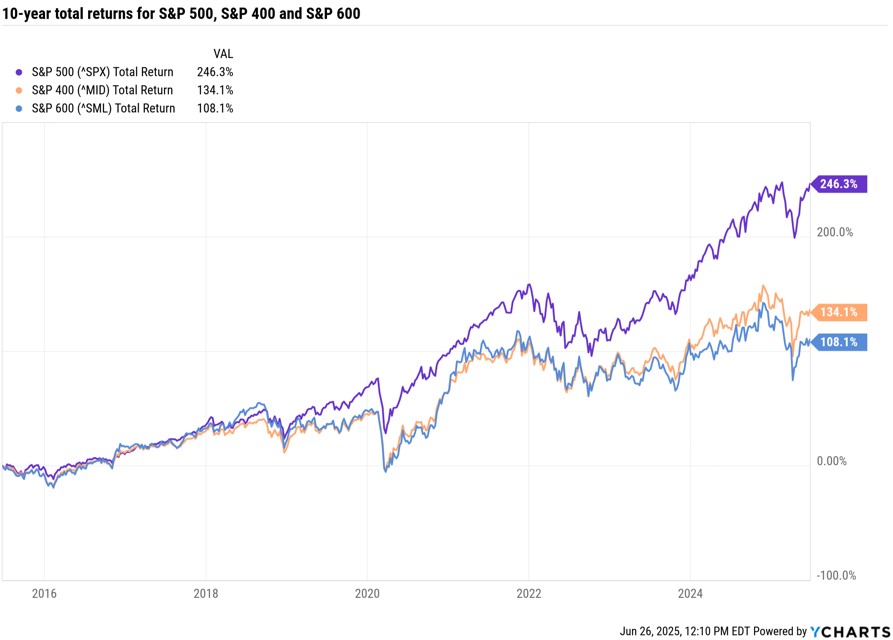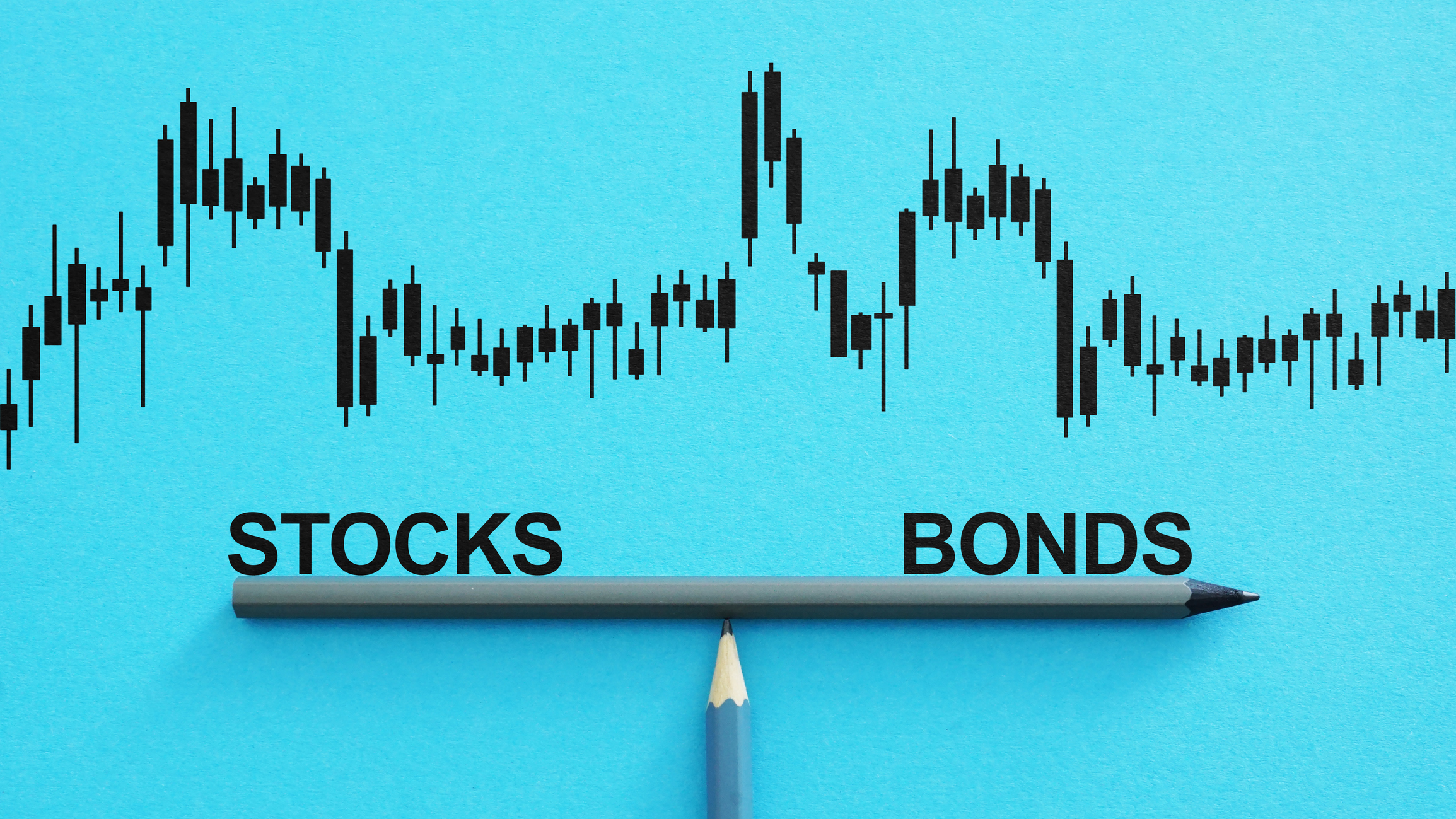The Best Mid-Cap Stocks to Buy
The best mid-cap stocks offer up an ideal combination of stability and growth potential.


If you read investing articles or watch CNBC, you'll find that coverage is largely skewed in favor of both ends of the market-cap spectrum.
Financial media outlets will write a story a day on the likes of mega-cap giants such Apple (AAPL) or Microsoft (MSFT). But given their propensity for massive single-day moves, small-cap companies will often draw some spotlight, too.
Today, however, we're going to give the market's "middle child" its due.
Read on as we discuss mid caps – specifically, what they are, why you'd want to invest in them, and how to find the best mid-cap stocks to buy.

What are mid-cap stocks?
The investing community has a funny way of agreeing on terminology in the abstract, but failing to come together when it's time to discuss specifics.
Broadly speaking, mid-cap stocks are those companies that aren't quite as big as large-cap stocks, but are bigger than small-cap stocks. Pretty much what you'd expect.
What exactly does that look like?
The market cap ranges vary depending on who's talking about them. If you look around, you'll see suggestions of $5 billion to $20 billion, $10 billion to $20 billion … heck, American Century says they're between $11 billion and $65 billion.
And the Russell MidCap Index doesn't even assign a specific dollar value. Instead, it views the mid-cap world (at least in the U.S.) as stocks that rank 201 through 1,000 by market cap, whatever those market caps might be.
However, like many financial outlets, we've long held that mid-cap stocks are companies between $2 billion and $10 billion. So a little later, when we show you how to search for mid caps, that's the market cap range we'll work with.
Whatever numbers you're dealing with, you're dealing with some "middle" of the market-cap world, which is why mid-cap stocks are often referred to as "Goldilocks stocks."
Why Goldilocks?
We'll assume everyone is familiar with the story of Goldilocks and the three bears. The moral of the story is that you'll usually find happiness in between two extremes.
I don't think that applies to every aspect of life, but the lesson certainly rings true with mid-cap stocks, which, from a performance perspective, are "just right."
Historically speaking, anyways.
Company (ticker) | Market cap | Long-term EPS growth rate | Estimated annual revenue growth (2 years) | Analysts' consensus recommendation |
Range Resources (RRC) | $9.8 billion | 325% | 18.50% | 2.46 |
Ormat Technologies (ORA) | $5.2 billion | 15.5 | 11.2 | 2.11 |
Synovus Financial (SNV) | $7.2 billion | 81.4 | 11.9 | 2.05 |
Commvault Systems (CVLT) | $7.8 billion | 40 | 12.7 | 1.82 |
Advanced Energy Industries (AEIS) | $5.0 billion | 196.5 | 10.5 | 1.82 |
Lumentum Holdings (LITE) | $6.6 billion | 1,292.0 | 25.4 | 1.81 |
Repligen (RGEN) | $7.0 billion | 59.7 | 13.1 | 1.75 |
Sonoco Products (SON) | $4.3 billion | 233 | 20.3 | 1.73 |
Agree Realty (ADC) | $8.0 billion | 30.6 | 13.6 | 1.71 |
Progress Software (PRGS) | $2.7 billion | 150 | 14.4 | 1.71 |
e.l.f. Beauty (ELF) | $7.0 billion | 12.2 | 22.5 | 1.69 |
Penumbra (PEN) | $9.8 billion | 11 | 13.7 | 1.56 |
Rambus (RMBS) | $6.7 billion | 10.6 | 15.8 | 1.33 |
Boot Barn Holdings (BOOT) | $4.7 billion | 338.7 | 12.5 | 1.27 |
Dycom Industries (DY) | $7.1 billion | 11 | 11 | 1.11 |

Why do people buy mid-cap stocks?
The logic goes something like this:
Mid-cap stocks tend to exhibit an ideal mix of characteristics of both their larger and smaller brethren.
On the one hand, they're more stable, better-capitalized, more profitable and have wider revenue streams than small caps. But on the other hand, they still have more room for growth, are nimbler and often aren't as overcrowded as big ol' blue chips.
It doesn't just sound good in theory. The long-term data, studied by a variety of asset managers over the years, shows that midsized companies are the real deal.
Consider this 2025 Invesco paper on mid-cap leadership:
"With an 11.0% annualized return, mid caps have outperformed small caps (9.05% annualized return) and large caps (10.4% annualized return) since the inception of the Russell Midcap Index in 1991 [through the end of 2024]. And they've done this often. Mid caps outperformed large caps 56% of the time and small caps 92% of the time for monthly five-year rolling periods."
More recent history hasn't been nearly so favorable.
Over the past 10 to 15 years, a number of factors – including growing economic advantages for large companies, periods of rocky markets driving investors' preference toward more stable holdings, and investors plunking lopsided sums into large-cap stock funds – have turned larger companies into the market's darlings.
That has resulted in a straight-up whupping of their middle- and small-sized counterparts:

But the tide might be starting to turn. Lagging performance has translated into historically low relative valuations for the mid-cap space.
Earlier this year, numerous asset managers noted the growing cheapness in midsized companies. Consider this from a February paper by Artisan Partners' U.S. value team:
"The case for allocating to mid-cap stocks is made even more compelling by relative valuations. Mid-cap stocks haven't been this cheap on a relative basis since coming out of the tech bubble in the early 2000s. Typically, mid-cap stocks trade at a slight premium to large-cap stocks due to their faster growth rates, however today they sell at a discount of 4.6 multiple points.
… While valuations may not be of much use as a timing tool, the last time the valuation discount was this large back in the early 2000s, a multiple-year period of mid-cap stock outperformance ensued."
Little has changed since then, meaning investors who want to jump into the mid-cap space can still do so for a historically relative song.

How to find the best mid-cap stocks to buy
Naturally, you can get exposure to mid-cap stocks through mutual funds and exchange-traded funds (ETFs), which will hold hundreds, even thousands of them at a time.
But a word of warning: Mid-caps are in a different position than many large caps in the growth cycle, so you don't always get the same characteristics out of a sector's large-cap stocks as you get out of their mid caps. Mid-cap consumer staples stocks can be surprisingly spritely, as can other typically defensive plays such as utilities.
While some investors might look to mid-cap stocks to provide at least a little income, we're going to help you start your search with a basic quality screen that largely focuses on mid-caps' growth potential.
To get to the following list of the best mid-cap stocks to buy, we've looked for firms within the sector that …
Are within the S&P 1500: The S&P 1500 is made up of the S&P 500 (large caps), S&P MidCap 400 (mid caps) and S&P SmallCap 600 (small caps). However, while we normally use the S&P 1500 to get a universe of stocks of all caps, we're solely using this starting point to focus on predominantly U.S. companies.
Have a market cap between $2 billion and $10 billion: Without getting too far into the weeds, it's possible that all three indexes actually contain companies that are mid caps based on these market capitalizations. So we're combining the S&P 1500 criterion with market cap to get a list of qualifying mid caps.
Are expected to grow earnings by at least 7% annually over the long term: We're looking for at least a reasonable level of long-term earnings growth.
Are expected to grow revenues by at least 10% annually over the next two years: This helps us look for companies that aren't just going to achieve higher earnings with cost savings – we want companies that are actually expected to grow.
Have at least eight covering analysts: We'd like to look at stocks that are on Wall Street analysts' radar, which makes it likelier that there's both more reporting and more insights on these companies. The more research we have at our disposal, the more educated a decision we can make.
Have a consensus Buy rating: All of the stocks must have an average broker recommendation of 2.5 or less within S&P Global Market Intelligence's ratings scale – meaning they are some of the analysts' favorite stocks.
S&P Global Market Intelligence converts analysts' ratings into a numerical scale. Anything with a score of 2.5 or less is considered a Buy. Every stock that made the list has a score of 2.5 or less, though most of them have much lower scores than that, meaning they're higher-conviction consensus Buys.
Related content
Profit and prosper with the best of Kiplinger's advice on investing, taxes, retirement, personal finance and much more. Delivered daily. Enter your email in the box and click Sign Me Up.
Kyle Woodley is the Editor-in-Chief of WealthUp, a site dedicated to improving the personal finances and financial literacy of people of all ages. He also writes the weekly The Weekend Tea newsletter, which covers both news and analysis about spending, saving, investing, the economy and more.
Kyle was previously the Senior Investing Editor for Kiplinger.com, and the Managing Editor for InvestorPlace.com before that. His work has appeared in several outlets, including Yahoo! Finance, MSN Money, Barchart, The Globe & Mail and the Nasdaq. He also has appeared as a guest on Fox Business Network and Money Radio, among other shows and podcasts, and he has been quoted in several outlets, including MarketWatch, Vice and Univision. He is a proud graduate of The Ohio State University, where he earned a BA in journalism.
You can check out his thoughts on the markets (and more) at @KyleWoodley.
-
 Cord Cutting Could Help You Save Over $10,000 in 10 Years
Cord Cutting Could Help You Save Over $10,000 in 10 YearsHow cutting the cord can save you money and how those savings can grow over time.
-
 The '8-Year Rule of Social Security' — A Retirement Rule
The '8-Year Rule of Social Security' — A Retirement RuleThe '8-Year Rule of Social Security' holds that it's best to be like Ike — Eisenhower, that is. The five-star General knew a thing or two about good timing.
-
 Cord Cutting Could Help You Save Over $10,000 in 10 Years
Cord Cutting Could Help You Save Over $10,000 in 10 YearsHow cutting the cord can save you money and how those savings can grow over time.
-
 Should I Buy Stocks or Should I Buy Bonds Right Now?
Should I Buy Stocks or Should I Buy Bonds Right Now?Generally speaking, stocks provide reasonable growth while bonds provide stable income. Each play important roles in diversified portfolios.
-
 You Were Planning to Retire This Year: Should You Go Ahead?
You Were Planning to Retire This Year: Should You Go Ahead?If the economic climate is making you doubt whether you should retire this year, these three questions will help you make up your mind.
-
 Are You Owed Money Thanks to the SSFA? You Might Need to Do Something to Get It
Are You Owed Money Thanks to the SSFA? You Might Need to Do Something to Get ItThe Social Security Fairness Act removed restrictions on benefits for people with government pensions. If you're one of them, don't leave money on the table. Here's how you can be proactive in claiming what you're due.
-
 From Wills to Wishes: An Expert Guide to Your Estate Planning Playbook
From Wills to Wishes: An Expert Guide to Your Estate Planning PlaybookConsider supplementing your traditional legal documents with this essential road map to guide your loved ones through the emotional and logistical details that will follow your loss.
-
 Why Investing Abroad Could Pay Off
Why Investing Abroad Could Pay OffCountries overseas are stimulating their economies, and their stocks are compelling bargains.
-
 Are These the Next Stocks to Split?
Are These the Next Stocks to Split?Interactive Brokers' recently split its stock to makes its shares more accessible to investors. Could these high-priced stocks be next?
-
 Your Home + Your IRA = Your Long-Term Care Solution
Your Home + Your IRA = Your Long-Term Care SolutionIf you're worried that long-term care costs will drain your retirement savings, consider a personalized retirement plan that could solve your problem.

